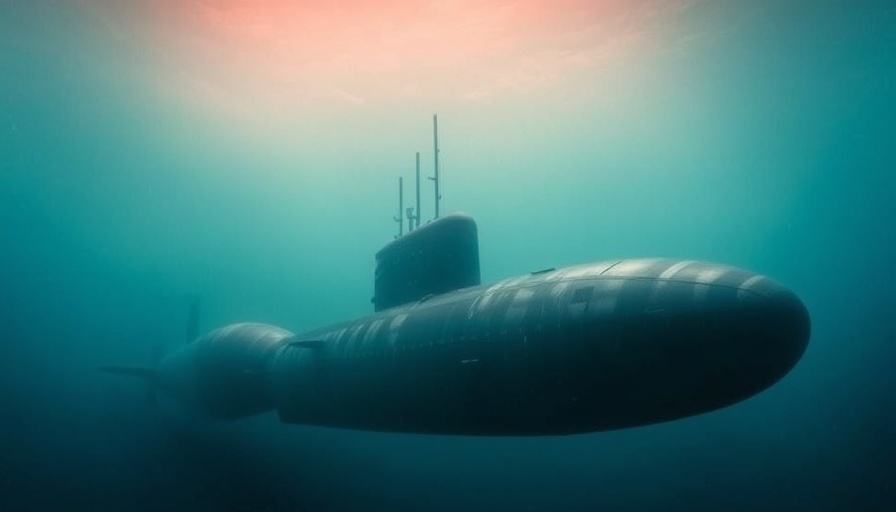
The Cold War's Submarine Showcase: The Competition Underwater
As geopolitical tensions between Russia and the US simmer, both nations are ramping up their naval capabilities, particularly in submarine technology. This escalation mirrors the Cold War era, where submarines were not only vessels of war but also symbols of national pride and technological prowess. Today, with advanced underwater capabilities, the stakes are even higher.
Submarine Strengths: A Closer Look
The US Navy’s Virginia-class submarines are state-of-the-art, often regarded as the gold standard of underwater warfare. Equipped with advanced sonar systems, they can stealthily engage enemy vessels while remaining undetected. Meanwhile, the Russian Navy boasts formidable assets like the Yasen-class submarines, which are designed for a variety of missions, from anti-submarine warfare to land attacks with precision missiles. The underlying technology in both countries reflects decades of innovation, yet they take distinctly different approaches to submarine design and functionality.
The Technological Arms Race Under the Waves
In recent years, submarines have evolved with cutting-edge technology that enhances performance and operational flexibility. The US has focused on integrating automation and advanced stealth technologies, which enable Virginia-class submarines to operate in congested waters and conduct covert operations. On the other hand, Russia emphasizes multi-role capabilities and the ability to launch cruise missiles that can strike targets hundreds of miles away. This ongoing arms race raises the question: how will these innovations shape naval supremacy in the future?
Global Implications of Undersea Warfare
The presence of powerful submarines is not just about military strength but also about strategic positioning in international politics. The recent increase in naval patrols, especially in contested waters like the South China Sea, signifies a return to aggressive posturing reminiscent of Cold War dynamics. Countries are not only investing in submarines for defense but are also using their fleets as diplomatic tools, showcasing military might to influence international alliances.
Future Trends: What Lies Beneath?
As the US and Russia continue to navigate their strained relationship, future submarine developments will likely focus on AI integration and drone technology enhancements. These innovative solutions could redefine traditional naval engagements, allowing for more versatile and responsive underwater operations. Additionally, with climate change and rising ocean levels presenting new challenges, submarines equipped with unconventional technologies may become critical for monitoring and protecting maritime territories.
Cultural Reflection: Understanding the Stakes
The rivalry between US and Russian submarines extends beyond mere hardware and tactical advantages; it embodies the underlying societal values and historical contexts of each nation. For Americans, the technological superiority of submarines represents freedom and innovation, while for Russians, their military vehicles symbolize strength and resilience. This cultural lens provides a deeper understanding of why nations invest heavily in their naval capabilities.
Emotional Perspectives: The Human Element
The sea holds both promise and peril. For submariners and their families, the tensions that play out beneath the waves can evoke a mixture of pride and concern. The lives of those serving in submarines represent a human sacrifice to ensure national security, but the risks of undersea combat are profound. Recognizing this human element reminds us that behind the machines are individuals committed to protecting their countries.
Conclusion: Navigating the Underwater Frontier
As we analyze the platforms and technologies that define the US and Russian submarine forces, it's crucial to consider the broader implications of this rivalry. The ongoing advancements in underwater warfare play a significant role in shaping international relations, influencing everything from trade agreements to military alliances.
Understanding these dynamics better equips nations and citizens alike to navigate the complexities of global security and international diplomacy. Staying informed about these undersea developments creates a more knowledgeable public ready to engage in discussions about the decisions that impact our world.
In light of these developments, advocating for diplomatic measures and peace initiatives could diffuse tensions and prevent conflicts that threaten global stability.
 Add Row
Add Row  Add
Add 




Write A Comment